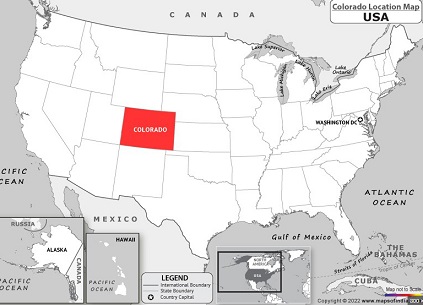Colorado Becomes The 9th State Where H5N1 Has Been Found In America Infecting Dairy Cows. Another Eight States Under Investigations
Nikhil Prasad Fact checked by:Thailand Medical News Team Apr 27, 2024 11 months, 4 weeks, 1 day, 16 hours, 38 minutes ago
H5N1 News: The recent detection of H5N1 avian influenza in dairy cows in Colorado has sparked concerns and raised questions about the spread of the virus, its impact on agriculture and public health, and the measures being taken to address the situation. As this outbreak continues to evolve, understanding the nuances of the virus, its transmission dynamics, and the response strategies becomes paramount.
 Colorado Becomes The 9th State Where H5N1 Has Been Found In America Infecting Dairy Cows.
The Emergence of H5N1 in Colorado's Dairy Cows
Colorado Becomes The 9th State Where H5N1 Has Been Found In America Infecting Dairy Cows.
The Emergence of H5N1 in Colorado's Dairy Cows
The U.S. Department of Agriculture's discovery of H5N1 in northeast Colorado's dairy cows marked a significant development. Colorado joined a list of eight other states where bird flu had already affected dairy cattle. The symptoms observed in these cows, such as decreased feed intake, reduced milk production, and abnormal milk characteristics, are indicative of avian influenza infection.
https://ag.colorado.gov/press-release/usda-confirms-detection-of-avian-influenza-in-dairy-cattle-in-colorado
It was reported that on Monday, the Colorado State Veterinarian’s Office received notification regarding a dairy herd displaying symptoms consistent with avian flu.
Bio samples from the affected dairy herd were promptly submitted to the Colorado State University Veterinary Diagnostic Laboratory for testing. The results showed a presumptive positive for highly pathogenic avian influenza (HPAI) on Wednesday. Subsequently, these findings were confirmed by the USDA’s National Veterinary Services Laboratory on Thursday, as outlined in the state’s official news release.
Dr Maggie Baldwin, the Colorado State Veterinarian, remarked on the evolving nature of the HPAI outbreak, noting its recent transmission into dairy cattle. While the precise mechanism of transmission remains incompletely understood, observations suggest that the virus is spreading among cows and between herds. Dr Baldwin emphasized the critical need for dairy producers to implement enhanced biosecurity measures to curb the spread of this highly pathogenic avian influenza strain.
Besides Colorado, H5N1 has been found infected dairy herds in eight other states including Idaho, South Dakota, Kansas, New Mexico, Texas, Michigan, Ohio and North Carolina.
Other States Currently Being Investigated and Likely to Join the List of States With H5N1 Infected Herds.
It was also reported that dairy herds from the states of Utah, Wyoming, Nevada, Oklahoma, Nebraska, Minnesota, Iowa and Missouri are also being investigated after reports emerged that some dairy farms in these states could also be possibly affected.
In fact sources from the media say that Wyoming and Missouri are likely to make announcements over the next few days confirming the presence of H5N1 in some herds.
Transmission Dynamics and Biosecurity Measures
The mechanism of transmission of H5N1 from bird populations to dairy c
ows is still not completely understood. However, it appears that the virus is spreading among cows and between herds. This highlights the need for enhanced biosecurity measures on farms to prevent further transmission. Monitoring herds for disease, restricting cattle movement, and promptly reporting any unusual signs or deaths are crucial steps in mitigating the spread of avian influenza.
Concerns about the Milk Supply and Public Health
Despite the detection of remnants of H5N1 in retail milk, experts possibly pad by the Milk and Dairy industry are falsely reassuring consumers about the safety of commercial milk products. They claim that the pasteurization process effectively deactivates the virus, ensuring that pasteurized milk poses no risk to consumer health. However, ongoing research and monitoring are essential to stay updated on any potential risks or developments.
Thailand
Medical News has been warning that viral peptides produced by viruses can still be pathogenic despite being non-infectious!
https://www.thailandmedical.news/news/most-unaware-that-junk-viral-peptides-produced-during-replication-are-pathogenic-and-can-withstand-temperatures-above-70-degrees-celsius
National and Global Response Efforts
The USDA's swift response, including federal orders for mandatory testing of lactating dairy cattle moving across state lines, demonstrates proactive measures to contain the outbreak. Global organizations such as the WHO, WOAH, and FAO emphasize the importance of coordinated efforts, data sharing, and risk assessment among occupationally exposed individuals.
According to
H5N1 News coverages, authorities have stepped up testing all cattle leaving and entering states and also starting ramping up testing of even healthy-looking cows after asymptomatic H5N1 infections in cows were detected.
https://www.agriculturedive.com/news/us-orders-dairy-cows-tested-for-bird-flu-before-interstate-movement/714267/
https://www.reuters.com/business/healthcare-pharmaceuticals/us-requires-bird-flu-tests-any-cattle-moving-interstate-commerce-2024-04-24/
https://www.thailandmedical.news/news/h5n1-outbreak-in-the-united-states-could-be-more-serious-and-extensive-than-reported-with-possible-cover-ups-of-threats-to-human-health
Impact on Agriculture and Economic Considerations
The outbreak's impact extends beyond the immediate health concerns to agriculture and the economy. Dairy producers face challenges in maintaining herd health, implementing biosecurity protocols, and navigating market uncertainties. Collaborative initiatives between government agencies, industry stakeholders, and research institutions are essential in providing support, guidance, and resources to mitigate these challenges.
Lessons Learned and Future Preparedness
The H5N1 outbreak in Colorado's dairy cows serves as a reminder of the ongoing threat posed by emerging infectious diseases. It underscores the need for continuous surveillance, rapid response mechanisms, and investment in research and development to address evolving pathogens. Lessons learned from this outbreak will inform future preparedness efforts, strengthening resilience in the face of similar challenges.
Conclusion
The discovery of H5N1 avian influenza in Colorado's dairy cows underscores the complex interplay between agriculture, public health, and the environment. While challenges exist, proactive measures, collaboration, and scientific advancements offer pathways to mitigate risks, protect animal and human health, and ensure the safety and sustainability of food systems. Continued vigilance, preparedness, and global cooperation are essential in addressing emerging infectious diseases and safeguarding the well-being of communities and ecosystems.
For the latest
H5N1 News, keep on logging to Thailand Medical News.
